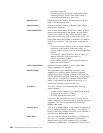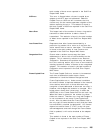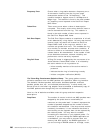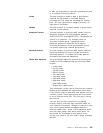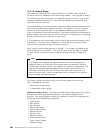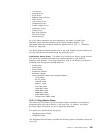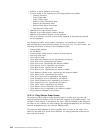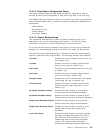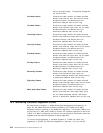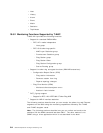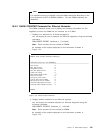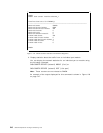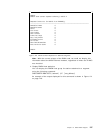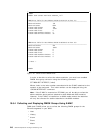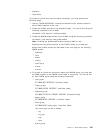
source routing bridges. Transparent bridges do
not use this field.
One-Hop Frames Contains the total number of frames received
whose route had one hop, were not all-routes
broadcast frames, and whose source or
destination address were on this ring.
Two-Hop Frames Contains the total number of frames received
whose route had two hops, were not all-routes
broadcast frames, and whose source or
destination address were on this ring.
Three-Hop Frames Contains the total number of frames received
whose route had three hops, were not all-routes
broadcast frames, and whose source or
destination address were on this ring.
Four-Hop Frames Contains the total number of frames received
whose route had four hops, were not all-routes
broadcast frames, and whose source or
destination address were on this ring.
Five-Hop Frames Contains the total number of frames received
whose route had five hops, were not all-routes
broadcast frames, and whose source or
destination address were on this ring.
Six-Hop Frames Contains the total number of frames received
whose route had six hops, were not all-routes
broadcast frames, and whose source or
destination address were on this ring.
Seven-Hop Frames Contains the total number of frames received
whose route had seven hops, were not
all-routes broadcast frames, and whose source
or destination address were on this ring.
Eight-Hop Frames Contains the total number of frames received
whose route had eight hops, were not all-routes
broadcast frames, and whose source or
destination address were on this ring.
More than 8-Hop Frames Contains the total number of frames received
whose route had more than eight hops, were
not all-routes broadcast frames, and whose
source or destination address were on this ring.
10.6 Monitoring Functions Supported In 8260
As mentioned in Chapter 4, “8260 Distributed Management Architecture” on
page 35, the DMM uses the facilities provided by the T-MAC and E-MAC
daughter cards to interface to the backplane segments. This allows DMM to use
the services of T-MAC and E-MAC to monitor the network segments to which the
T-MAC or E-MAC is assigned and collect various statistical information about the
segment and the stations attached to these segments.
To monitor each backplane or isolated segment, a T-MAC (for token-ring
segments) or E-MAC (for Ethernet segments) is required. You can use the
212 8260 Multiprotocol Intelligent Switching Hub



